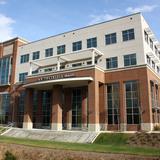- Mayland offers a variety of curriculum programs, including numerous college transfer options, as well as adult education, distance learning, and dual enrollment for high school students. The open-door admission policy accepts students as young as 14, in the Early College High School, and as senior as octogenarians, in the Continuing Education Program.
School Highlights
Mayland Community College serves 1,114 students (49% of students are full-time).
The college's student:teacher ratio of 7:1 is lower than the state community college average of 13:1.
Minority enrollment is 14% of the student body (majority Hispanic), which is less than the state average of 48%.
Quick Stats (2025)
- Enrollment: 1,114 students
- In-state tuition: $2,561
- Out-state tuition: $8,584
- Acceptance Rate: 100%
- Student:teacher ratio: 7:1
- Minority enrollment: 14%
- Source: Integrated Postsecondary Education Data System (IPEDS)
School Overview
The teacher population of 158 teachers has stayed relatively flat over five years.
Mayland Community College
(NC) Community College Avg.
Carnegie Classification
Associate's Colleges: Mixed Transfer/Career & Technical-High Nontraditional
Associate's Colleges: Mixed Transfer/Career & Technical-High Nontraditional
Institution Level
At least 2 but less than 4 years
At least 2 but less than 4 years
Institution Control
Public
Public
Total Faculty
158 staff
256 staff
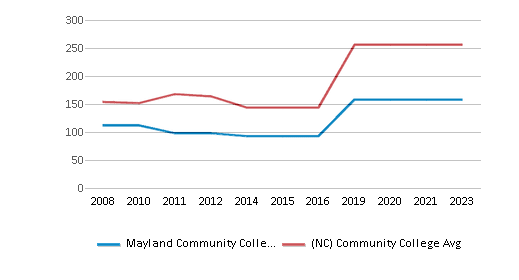
School Calendar
Student Body
The student population of Mayland Community College has grown by 179% over five years.
The student:teacher ratio of 7:1 has increased from 3:1 over five years.
The Mayland Community College diversity score of 0.26 is less than the state average of 0.66. The school's diversity has declined by 9% over five years.
Total Enrollment
1,114 students
2,542 students
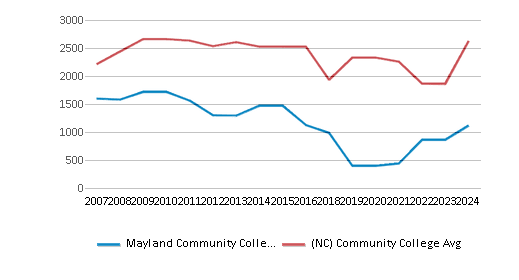
Student : Teacher Ratio
7:1
13:1
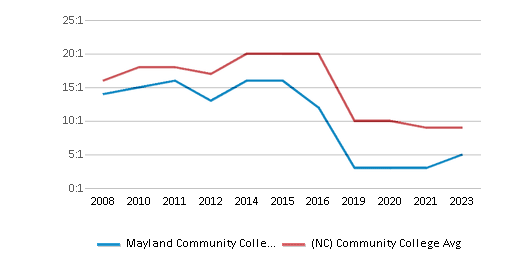
# Full-Time Students
550 students
766 students
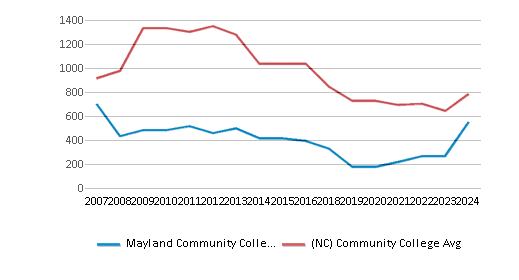
# Part-Time Students
564 students
1,813 students
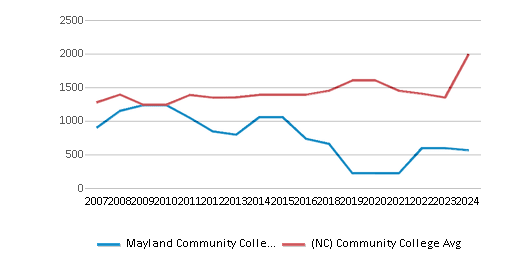
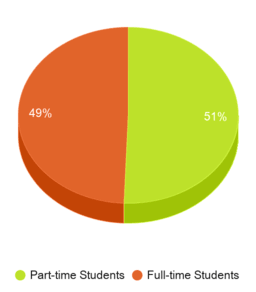

# Enrollment Undergraduate
111 students
316 students
# Full-Time Undergraduate Students
550 students
766 students
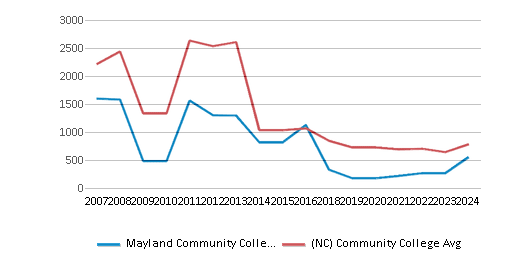
# Full-Time Graduate Students
n/a
22 students
# Part-Time Undergraduate Students
564 students
1,990 students
# Part-Time Graduate Students
n/a
3 students
Total Dormitory Capacity
n/a
717 students
% American Indian/Alaskan
1%
1%
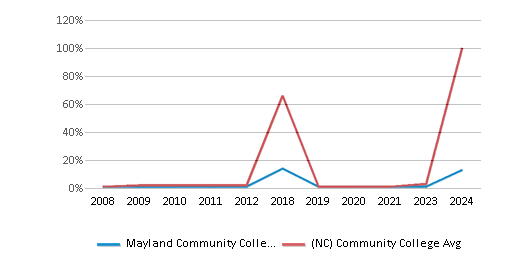
% Asian
1%
3%
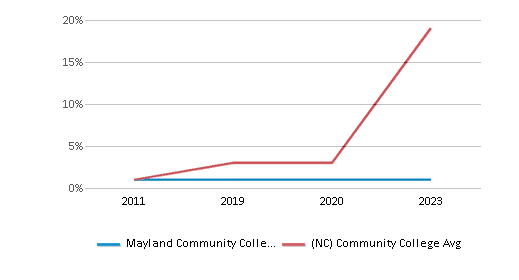
% Hispanic
7%
13%
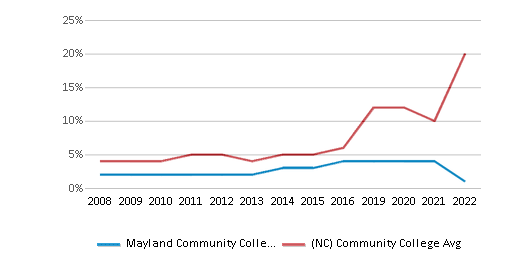
% Black
1%
21%
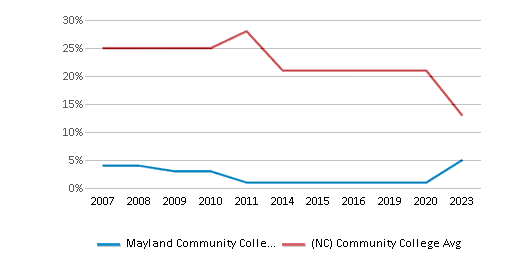
% White
86%
52%
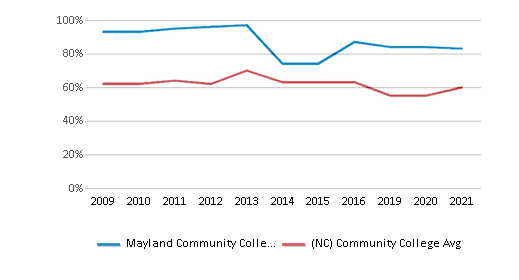
% Hawaiian
n/a
1%
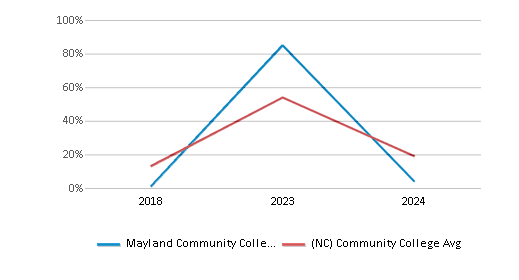
% Two or more races
n/a
3%
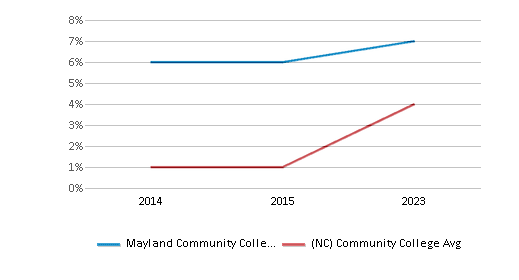
% Non Resident races
n/a
1%
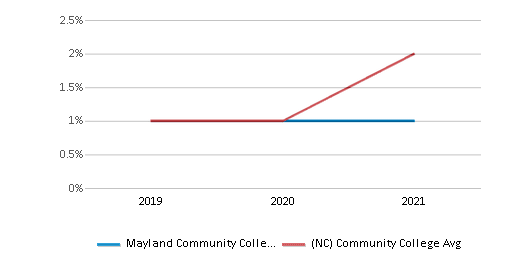
% Unknown races
3%
5%
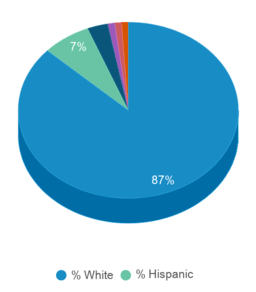
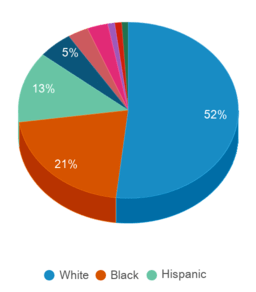
Diversity Score
0.26
0.66
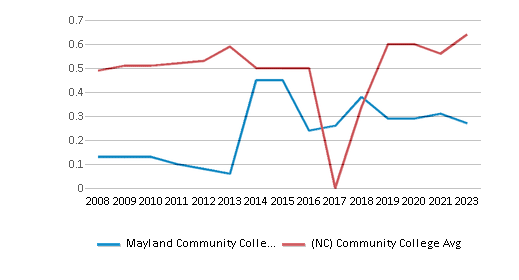
College Completion Rate (Students who graduate in less than 4 years)
0.2414%
0.3684%
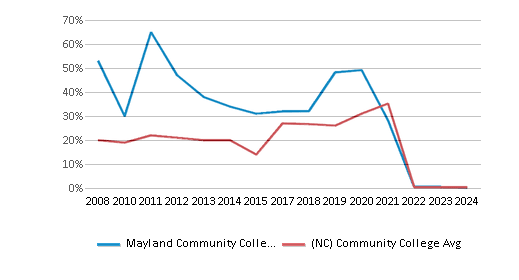
College Completion Rate (Students who graduate in 4 years or more than 4 years)
n/a
0.4286%
Average Graduate Earnings (10 Years)
$25,300
$27,500
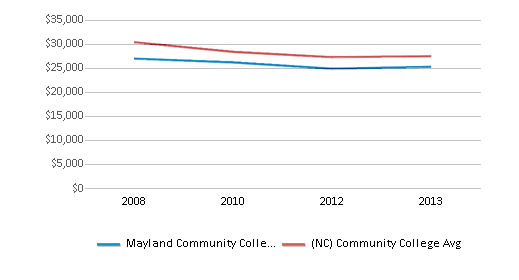
Tuition and Acceptance Rate
The public in-state tuition of $2,561 is less than the state average of $3,915. The in-state tuition has stayed relatively flat over four years.
The public out-state tuition of $8,584 is less than the state average of $9,508. The out-state tuition has stayed relatively flat over four years.
In-State Tuition Fees
$2,561
$3,915
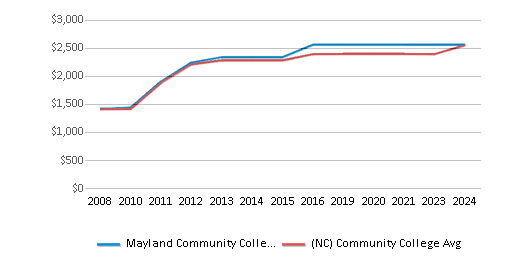
Out-State Tuition Fees
$8,584
$9,508
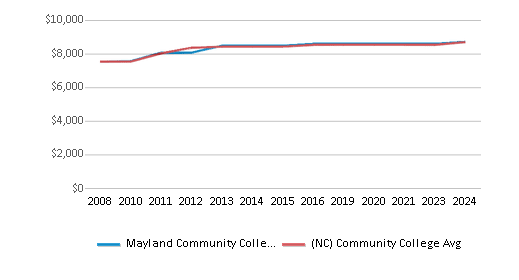
% Students Receiving Some Financial Aid
83%
82%
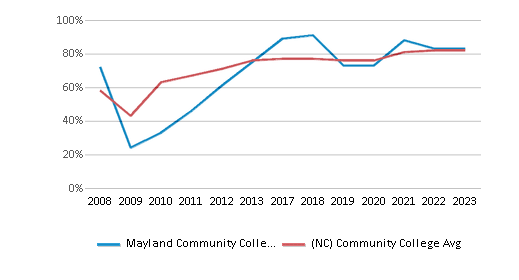
Median Debt for Graduates
$5,500
$10,500
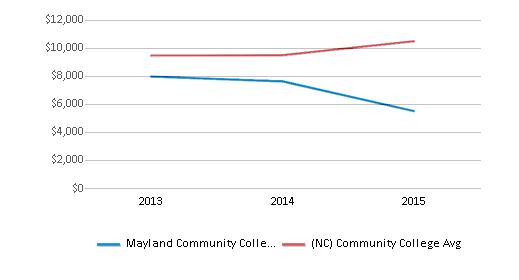
Median Debt for Dropouts
$4,750
$6,000

Acceptance Rate
100%
82%

SAT Reading
n/a
488
SAT Math
n/a
498
ACT Composite
n/a
20
ACT English
n/a
13
ACT Math
n/a
16
Extracurriculars
Total ExtracurricularsTotal Extra-curric.
8 extracurriculars
ExtracurricularsExtra-curric.
Club or Organization:
Association of Student Medical Assistants, Circle K International, Collegiate Future Farmers of America (FFA), Early Childhood Education Club, Human Services Student Organization, Student Ambassadors Association, Student Government Association, Student Nurses Assiciation
Association of Student Medical Assistants, Circle K International, Collegiate Future Farmers of America (FFA), Early Childhood Education Club, Human Services Student Organization, Student Ambassadors Association, Student Government Association, Student Nurses Assiciation
Source: 2024 (or latest year available) Integrated Postsecondary Education Data System (IPEDS) , School Administrators
School Notes
- Mayland Community College is located in the Appalachian Mountains of western North Carolina. It is currently one of 58 institutions operating under the North Carolina Community College System.
- Mayland offers a variety of curriculum programs, including numerous college transfer options, as well as adult education, distance learning, and dual enrollment for high school students. The open-door admission policy accepts students as young as 14, in the Early College High School, and as senior as octogenarians, in the Continuing Education Program.???
- To assist the local workforce, MCC provides hundreds of workforce development and continuing education courses that directly serve the needs of local and regional business and industries, as well as the civic and cultural interests of the community. And the colleges recent revitalization involves a strong commitment to the economic development within the three counties it serves.
- In addition, Mayland Community College offers correctional education at Avery/Mitchell and Mountain View correctional facilities.
- Our successes and achievements consistently receive national rankings.
- 10th ranked college on the 50 top community colleges ?thebestschools.org
- 32nd ranked college in the top 50 community colleges ?Washington Monthly
- 9th ranked college in the nations top 10 community colleges ?Bankrate, Inc.
- 16th ranked in Community Colleges in the U.S.??Create A Careers Top 25?
- In its role as the educational gateway to opportunity in Mitchell, Avery, and Yancey counties, Mayland values community, excellence, and opportunity above all.
Frequently Asked Questions
How much does Mayland Community College cost?
Mayland Community College's tuition is approximately $2,561 for In-State students and $8,584 for Out-State students.
What is the acceptance rate of Mayland Community College?
The acceptance rate of Mayland Community College is 100%, which is higher than the state average of 82%.
Recent Articles

Obtaining Your Bachelor's Degree at a Community College
Explore the evolving landscape of community colleges offering bachelor's degrees, addressing affordability, accessibility, and workforce needs.

A to Z of Community College Certificates and Courses
From business and healthcare to technology and skilled trades, the article showcases the breadth of options available to students seeking to enhance their knowledge, develop new skills, or pursue career advancement.

What is a Community College?
This comprehensive guide explains what a community college is, its history, and its role in higher education. It covers the types of programs offered, differences from four-year colleges, benefits of attending, and important considerations for prospective students, providing valuable insights for those exploring educational options.

